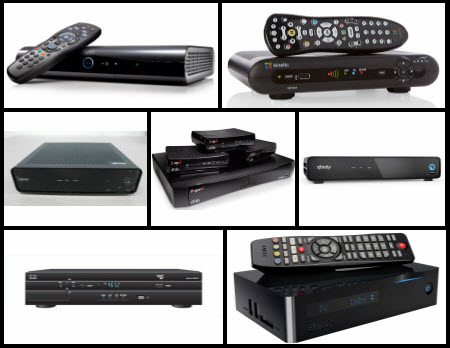Set-Top Pushback Hits a Crescendo

WASHINGTON — The battle over the future of video navigation devices, and the “one ring to unite them all” approach of combining traditional and online video via a single device or app, played out in the FCC’s set-top docket last week — with a definite tilt toward pausing or punting on the proposal.
The Federal Communications Commission received hundreds — perhaps thousands — of pages worth of reply comments on the proposal. The bulk of the commenters clearly appeared at least to have concerns with the plan, and many had much more than that.
Read more about the FCC's set-top box proposal.
FCC chairman Tom Wheeler has signaled the proposal, which would make set-top content and data available to third-party navigation device and app developers, needs to be enacted. But he has also said the proposal is a work in progress and its details may change.
Multichannel video programming distributors (MVPDs), though, are skeptical any changes will be made.
PROCESS COULD BE LENGTHY
The FCC’s Democratic majority has only approved a notice of proposed rulemaking, not an order. And the agency could take its time in voting on a final version, which even then won’t take hold for another year or two.
Multichannel Newsletter
The smarter way to stay on top of the multichannel video marketplace. Sign up below.
That timeline is cold comfort to MVPDs that face the prospect of giving up data and content to third parties with essentially only promises that their contracts, and their content providers’ copyrights, will be protected from hackers or pirates, or that competitors can’t monetize their content at will and without compensation.
AT&T was representative of those wielding hammers rather than red flags. The DirecTV parent company called the proposal “indefensible as a matter of law and nonsensical as a matter of public policy,” and an unnecessary, harmful and deeply flawed “scheme.”
The National Cable & Telecommunications Association raised a hammer and a flag: Specifically, it likened the set-top plan to the “broadcast flag” receiver-technology mandate approved by the FCC a decade ago. That mandate was thrown out by a federal court, which ruled that the agency’s reach did not extend past transmissions.
Foes of the set-top proposal were using supporters’ past opposition to that broadcast-flag proposal against them.
The NCTA noted that Public Knowledge, which supports the current set-top plan, opposed the broadcast flag, quoting the public-interest group’s statement at that time: “The market for delivering content digitally over new technologies is working. Consumers can watch and listen to the content they purchase anytime and anywhere they want. All of these great developments happened without government intervention,” which shows that “government intervention in the free market [in this case is] unnecessary.”
Gigi Sohn, then-head of Public Knowledge and now a top adviser to the FCC’s Wheeler, said at the time the flag would give the agency unprecedented power to dictate product design and would cause consumer confusion and cost.
After the flag was thrown out, the NCTA said, “Public Knowledge’s prediction of market successes unshackled by technical mandates came true … The current commission should not make the same mistake again.”
Public Knowledge senior staff attorney John Bergmayer told Multichannel News last week, “The broadcast flag case doesn’t really apply because FCC authority over MVPDs themselves can get to the functionality of competitive devices.”
MVPDs have enlisted, or been joined by, an unusual cross-section of interests, including unions, Congressional Democrats and diversity groups. House Republicans last week launched an effort to block the box proposal via the appropriations process, though it is unlikely to succeed.
OUTDATED TECH MANDATE
While few argue that the set-top market is competitive — 99% of boxes are leased from MVPDs — pay TV providers have described the FCC’s solution as yesterday’s technology mandate for tomorrow’s app-driven navigation marketplace, ignoring the trend away from provider-issued set-top boxes.
Now that replies are in, the next move is the FCC’s, though it is under no obligation to vote on an order.
For example, the FCC voted unanimously in December 2014 to propose classifying some over-the-top providers as MVPDs. The idea was to help promote online video as a competitor to traditional cable and satellite providers.
But after Wheeler got some major pushback, the proposal was put on the back burner and remains there.
Pay TV providers are hoping for a similar result.
Contributing editor John Eggerton has been an editor and/or writer on media regulation, legislation and policy for over four decades, including covering the FCC, FTC, Congress, the major media trade associations, and the federal courts. In addition to Multichannel News and Broadcasting + Cable, his work has appeared in Radio World, TV Technology, TV Fax, This Week in Consumer Electronics, Variety and the Encyclopedia Britannica.

